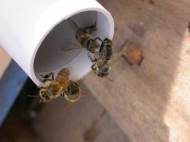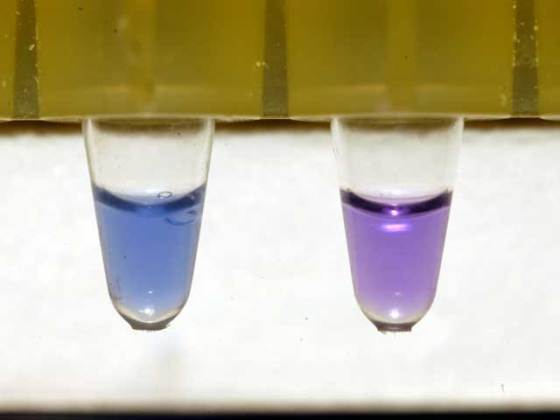Using bees as early warning for a fruit tree disease
 When blossoms and leaves wane and turn black, it is usually too late to fight off the disease which attacks the plant. Fire blight is a plant disease which strikes fruit trees such as apple and pear trees. Clearing the affected trees was often the only chance left before it takes over the entire orchard. However, researchers at the Vienna University of Technology have now developed a method where bees are used to detect the disease on time.
When blossoms and leaves wane and turn black, it is usually too late to fight off the disease which attacks the plant. Fire blight is a plant disease which strikes fruit trees such as apple and pear trees. Clearing the affected trees was often the only chance left before it takes over the entire orchard. However, researchers at the Vienna University of Technology have now developed a method where bees are used to detect the disease on time.
Up until recently, constant monitoring of a large orchard to detect fire blight has been practically impossible. This always involved manually collecting blossoms from all the trees and then examining them for the fire blight bacteria. Even when this method is used, it is not excluded that an affected branch could be overlooked. Researchers came up with the idea to employ bees that live near orchards, since their colonies tend to collect the nectar from the blossoms.
“Back at the hive, we attach small tubes lined with foil at the hive entrance, through which every bee must crawl”, said Heidi Halbwirth, Technical University of Vienna’s Institute of Chemical Engineering, Environmental Technology and Technical Biosciences. “If the bees have come into contact with the bacteria, then some bacteria are left behind on the foil linings.”
Only after a couple of hours, these foils may be removed and any bacteria present can be washed off by a solution. The washing solution is then subjected to a tailor-made color test, called the Blue LAMP, which reveals if an imminent fire blight danger actually exists.
“The liquid of the Blue LAMP reacts very specifically to the presence of the fire blight bacteria DNA”, said Christian Gosch, who developed this test together with Heidi Halbwirth, Karl Stich and Thilo Fischer.
At a temperature of 63°C (145.4°F), the DNA is replicated on a massive scale by a biochemical chain reaction, and if any fire blight DNA is present the liquid will change its color from purple to blue. The method is extremely sensitive and a presence of just 20 bacteria is sufficient to be detected.
Previously, as a preventive measure, antibiotics such as streptomycin were often sprayed in the orchards whenever a high fire blight risk was just suspected on the basis of the season and weather conditions. The Blue LAMP test should provide reliable information to whether such measures are necessary at all, or whether a particular area is free of fire blight at that moment.
The flight range of bees is up to three kilometers (1.8 miles) and that is far enough to enable the monitoring of ones own orchard and the surrounding areas which provide a direct threat. This quick test of the TU Vienna has already been patented and they haven’t announced when it could be commercialized.
For more information, read the article published in the European Journal of Plant Pathology: “Blue EaLAMP—a specific and sensitive method for visual detection of genomic Erwinia amylovora DNA”.










Another reason we need to save the bees. Bees are so valuable to our ecosystem.